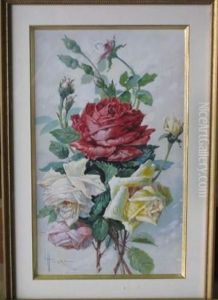Louis Hingre Paintings
Louis Hingre was a French sculptor and medalist, born in 1855 in Toul, France, and passed away in 1911. His work is characterized by its meticulous attention to detail and its blend of classical and modernist elements, making him a notable figure in the transitional period of art at the turn of the 20th century. Hingre's sculptures often explored themes of human emotion, mythological narratives, and natural beauty, reflecting the broader artistic movements of his time, including Symbolism and Art Nouveau.
Hingre trained at the École des Beaux-Arts in Paris, where he was influenced by the teachings of famous sculptors such as François Jouffroy and Jules Cavelier. His education and talent led him to win the prestigious Prix de Rome in 1881, which afforded him the opportunity to study at the Villa Medici in Rome, a pivotal experience that greatly influenced his artistic development. During his career, Hingre exhibited at the Paris Salon, an important venue for artists to showcase their work to the public and critics alike. His sculptures, medals, and bas-reliefs were well received, earning him accolades and commissions.
Beyond his artistic achievements, Hingre was also recognized for his contributions to public monuments and decorative arts. He created several notable public works, including monuments dedicated to various historical figures and events in France. His ability to work with different materials, from bronze to marble, showcased his versatility and skill as a sculptor. Despite his death in 1911, Louis Hingre's legacy endures, with his works preserved in museums and collections in France and beyond. His career offers insight into the evolution of French sculpture at a time of significant artistic change, bridging the gap between the neoclassical tradition and the emerging modernist movements that would redefine European art in the early 20th century.
